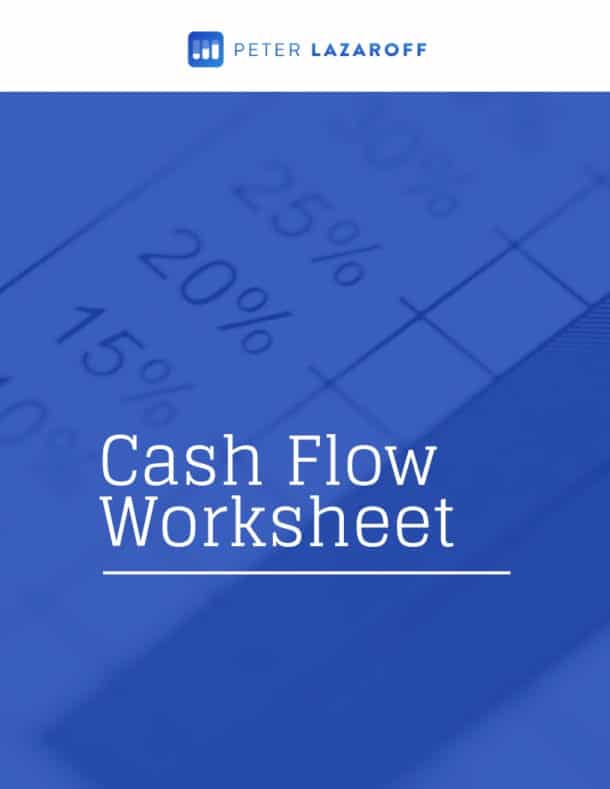Listen Now
Welcome to the world of TACO (“Trump Always Chickens Out”) investing. In this episode, we’ll use the TACO phenomenon as a lens to explore how investors can better understand and navigate short-term market swings caused by political news.
You’ll learn:
- Why markets often overreact to political headlines.
- The critical distinction between the economy and the stock market.
- How to maintain a disciplined, long-term investing mindset amid policy volatility.
- Key strategies that successful investors use to manage short-term uncertainty.
Join me to uncover how to thrive in a market dominated by policy whiplash—and why staying disciplined matters more than ever.
Sign up for my newsletter so you can easily reply to my emails with your thoughts or questions for the podcast:
What is TACO, and Why Should Investors Care?
The phrase TACO was coined by Financial Times columnist Robert Armstrong, this phrase describes a pattern we’ve seen repeatedly: President Trump announces aggressive tariffs or economic policies, markets immediately react negatively, only for him to quickly soften or reverse his stance.
While the term itself isn’t crucial, its popularity provides us an opportunity to reflect on how policy decisions can influence short-term market movements. By examining these reactions, we can better understand the broader implications for long-term investors and explore strategies for navigating similar situations in the future.
The TACO Effect Explained: Key Market Examples
The “TACO effect” follows a clear four-stage pattern:
First, there’s an aggressive policy announcement—usually via Twitter or a press release—typically around tariffs or trade restrictions. The market quickly panics, fearing the worst-case scenario.
Second, stocks immediately fall. Investors rush for the exits, worried about potential economic damage.
Third, shortly afterward, Trump or his administration softens or outright reverses the original stance, calming fears.
Fourth, markets rebound—often sharply—as relief spreads among investors.
Consider a few specific historical examples:
China Trade War (2018–2019)
In 2018, President Trump initiated a trade war with China by imposing tariffs on hundreds of billions of dollars’ worth of Chinese goods, citing unfair trade practices. China retaliated with its own tariffs on U.S. exports. This tit-for-tat escalation led to significant market volatility. For instance, on August 23, 2019, the Dow Jones Industrial Average dropped 623 points following new tariff announcements. However, markets often rebounded when negotiations resumed or tariffs were delayed.
Mexico Border Tariff Threat (June 2019)
In May 2019, President Trump threatened to impose a 5% tariff on all Mexican imports unless Mexico took action to curb illegal immigration. The announcement caused immediate concern among investors, leading to market declines. However, on June 7, 2019, Trump announced that a deal had been reached with Mexico, and the tariffs were suspended indefinitely, leading to a market rebound.
European Auto Tariffs Threat (2018–2020)
Throughout 2018 to 2020, President Trump repeatedly threatened to impose tariffs on European automobiles, citing national security concerns. These threats created uncertainty in global markets, particularly affecting the European auto sector. For example, in June 2018, the European Union implemented retaliatory tariffs on U.S. goods, prompting Trump to threaten a 20% tariff on all European car imports, causing market unease.
Investment Strategies During TACO-Driven Market Volatility
It’s essential to understand what’s happening beneath these short-term market moves. Markets aren’t randomly fluctuating—they’re rapidly adjusting corporate earnings expectations. A new tariff threat means higher costs and lower potential profits for businesses. When policies reverse, those expected costs disappear, causing stocks to rebound.
Traders attempt to profit from these short-term fluctuations by exploiting perceived mispricings in corporate earnings. Price fluctuations are essentially the market’s real-time adjustments in earnings expectations and their confidence in those earnings. Traders are essentially betting they can anticipate and capitalize on these short-term adjustments.
In contrast, long-term investors don’t need to be overly concerned with short-term changes in earnings, even if the time horizon extends from multiple quarters to several years. Policy changes can indeed impact earnings for several years, but investing is fundamentally a multi-decade endeavor. CEOs and shareholders alike aim to maximize profits. Policy shifts are akin to changing the rules of the game—once businesses understand these new rules, they adapt quickly and strategically to remain profitable.
This is perhaps the biggest misunderstanding many investors have about how policy impacts markets. Long-term investors are effectively business owners. Reflecting on my own experience and that of my clients who own businesses, none have said, “I think I’m going to sell my business because of policy changes or economic uncertainties.” Instead, the prevailing sentiment among business owners is to weather these periods of uncertainty, adjust strategies, and focus on running the business profitably in whatever environment they face.
The Economy and the Stock Market Are Not the Same
Another major misunderstanding among investors when discussing policy changes is the conflation of the economy with the stock market. They are entirely different entities.
Policies may be detrimental to economic growth both in the short-term and the long-term, but economic growth doesn’t directly correlate with stock market returns. A primary reason for this is that corporations prioritize profits above all else. If opportunities to generate greater profits exist in other markets, companies will shift their strategies accordingly. Many businesses aren’t confined to the economies of their home countries.
Yes, some companies will inevitably suffer losses due to policy changes, but this underscores the importance of diversification. Historically, only a surprisingly small number of companies are responsible for driving the majority of market returns in any given year.
It’s also crucial to understand that stock prices are forward-looking—they reflect the market’s collective expectation of future earnings and economic conditions rather than current realities. Understanding this dynamic helps clarify why markets often react strongly and swiftly to policy announcements and reversals.
Lessons for Investors: How to Thrive Amid Policy Whiplash
Navigating the volatility sparked by policy announcements like those we’ve labeled “TACO” highlights essential investing principles for anyone focused on long-term wealth creation. Here are three key lessons:
1. Think Like a Business Owner:
Successful long-term investors understand they’re effectively owners of the businesses they invest in. Just as business owners don’t typically sell their businesses due to short-term policy changes, disciplined investors should resist making reactionary decisions based on temporary political or economic uncertainty. Companies adapt and seek profitability under changing conditions, and your investments can benefit from this resilience over time.
2. Diversify to Mitigate Policy Risk:
While some companies or sectors may suffer from specific policy decisions, effective diversification helps protect your portfolio from the outsized impact of these isolated disruptions. Diversification ensures you’re broadly exposed to the relatively small percentage of businesses that consistently drive market returns, regardless of short-term policy shifts.
3. Understand That Markets are Forward-Looking:
Short-term market volatility often reflects rapid adjustments in investor expectations about future earnings and economic conditions—not a clear indicator of long-term investment prospects. Investors who maintain a disciplined approach, recognizing that markets continuously recalibrate based on anticipated future developments, position themselves to avoid costly emotional decisions.
By maintaining discipline, thinking long-term, and remaining diversified, investors can effectively manage volatility and turn market disruptions into opportunities.
Conclusion and Key Takeaways
Navigating market volatility driven by policy shifts requires patience, discipline, and perspective. Short-term disruptions like those associated with the TACO phenomenon remind us of the importance of maintaining a long-term investment focus. By understanding the difference between the economy and the market, embracing a business-owner mindset, and staying diversified, investors can effectively manage volatility and position themselves for enduring success.
If you enjoyed this episode, please consider leaving a review—it helps others discover this podcast and allows me to continue delivering valuable insights. Stay disciplined, stay patient, and remember: successful investing isn’t about reacting to headlines, it’s about following a thoughtful, evidence-based strategy over the long run.
Resources:
The Long Term Investor audio is edited by the team at The Podcast Consultant
Submit Your Question For the Podcast
Do you have a financial or investing question you want answered? Submit your question through the “Ask Me Anything” form at the bottom of my podcast page.
Support the Show
Thank you for being a listener to The Long Term Investor Podcast. If you’d like to help spread the word and help other listeners find the show, please click here to leave a review.
I read every single one and appreciate you taking the time to let me know what you think.
Free Financial Assessment
Do you want to make smart decisions with your money? Discover your biggest opportunities in just a few questions with my Financial Wellness Assessment.

Disclosure: This content, which contains security-related opinions and/or information, is provided for informational purposes only and should not be relied upon in any manner as professional advice, or an endorsement of any practices, products or services. There can be no guarantees or assurances that the views expressed here will be applicable for any particular facts or circumstances, and should not be relied upon in any manner. You should consult your own advisers as to legal, business, tax, and other related matters concerning any investment.
The commentary in this “post” (including any related blog, podcasts, videos, and social media) reflects the personal opinions, viewpoints, and analyses of the Plancorp LLC employees providing such comments, and should not be regarded the views of Plancorp LLC. or its respective affiliates or as a description of advisory services provided by Plancorp LLC or performance returns of any Plancorp LLC client.
References to any securities or digital assets, or performance data, are for illustrative purposes only and do not constitute an investment recommendation or offer to provide investment advisory services. Charts and graphs provided within are for informational purposes solely and should not be relied upon when making any investment decision. Past performance is not indicative of future results. The content speaks only as of the date indicated. Any projections, estimates, forecasts, targets, prospects, and/or opinions expressed in these materials are subject to change without notice and may differ or be contrary to opinions expressed by others.
Please see disclosures here.
















